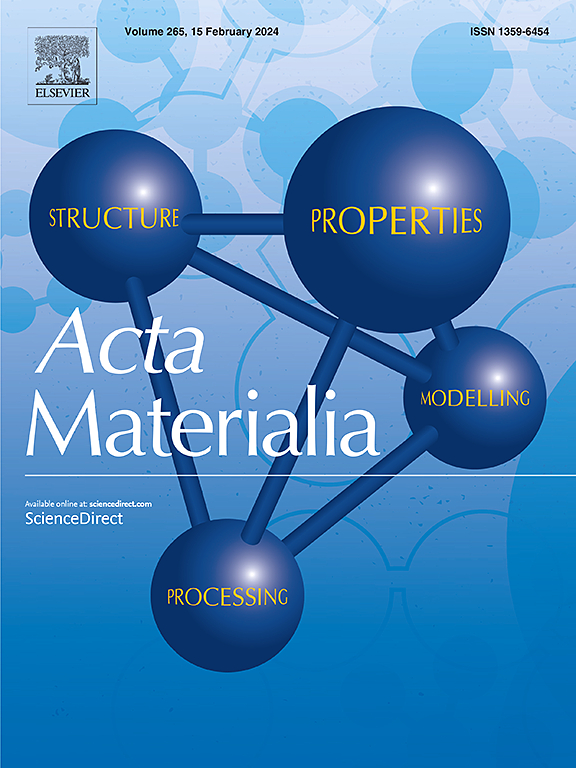Nanoscale mechanisms limiting non-basal plasticity in magnesium
IF 9.3
1区 材料科学
Q1 MATERIALS SCIENCE, MULTIDISCIPLINARY
引用次数: 0
Abstract
Dislocations of the + type are widely recognized as the primary defects limiting the ductility of magnesium. While their glide can be activated in small magnesium crystals under high flow stresses, our in-situ transmission electron microscopy compression tests, conducted over a large strain range, reveal that + dislocation plasticity becomes inactive following initial activation, leading to dislocation avalanches and subsequent deformation twinning. Initially, pyramidal II slip mediated by + dislocations accommodates plastic deformation in c-axis-oriented magnesium pillars under compression. However, as deformation progresses, interactions among dislocations increasingly impede further glide and prevent surface annihilation. Correlative atomistic simulations indicate that this limited dislocation plasticity arises from the formation of basal I1 and I2 stacking faults, generated by interactions between glissile pyramidal II dislocations. The restricted motion of + dislocations consequently results in stress accumulation, which triggers dislocation avalanches and deformation twinning. This deformation behavior fundamentally differs from the typical dislocation starvation or exhaustion mechanisms observed in small-scale plasticity, offering novel insights into plasticity and work hardening in bulk magnesium.

纳米尺度机制限制镁的非基塑性
< c+a >型位错被广泛认为是限制镁塑性的主要缺陷。虽然它们的滑动可以在高流动应力下在小镁晶体中被激活,但我们在大应变范围内进行的原位透射电镜压缩测试表明,< c+a >位错塑性在初始激活后变得不活跃,导致位错雪崩和随后的变形孪晶。最初,由< c+a >位错介导的锥体II滑移使c轴取向镁柱在压缩下发生塑性变形。然而,随着变形的进行,位错之间的相互作用越来越多地阻碍了进一步的滑动和防止表面湮灭。相关的原子模拟表明,这种有限的位错塑性是由晶面锥体位错之间的相互作用产生的基底I1和I2层错的形成引起的。< c+a >位错的受限运动导致应力积累,从而引发位错雪崩和变形孪晶。这种变形行为与在小尺度塑性中观察到的典型位错饥饿或耗尽机制根本不同,为块状镁的塑性和加工硬化提供了新的见解。
本文章由计算机程序翻译,如有差异,请以英文原文为准。
求助全文
约1分钟内获得全文
求助全文
来源期刊

Acta Materialia
工程技术-材料科学:综合
CiteScore
16.10
自引率
8.50%
发文量
801
审稿时长
53 days
期刊介绍:
Acta Materialia serves as a platform for publishing full-length, original papers and commissioned overviews that contribute to a profound understanding of the correlation between the processing, structure, and properties of inorganic materials. The journal seeks papers with high impact potential or those that significantly propel the field forward. The scope includes the atomic and molecular arrangements, chemical and electronic structures, and microstructure of materials, focusing on their mechanical or functional behavior across all length scales, including nanostructures.
 求助内容:
求助内容: 应助结果提醒方式:
应助结果提醒方式:


